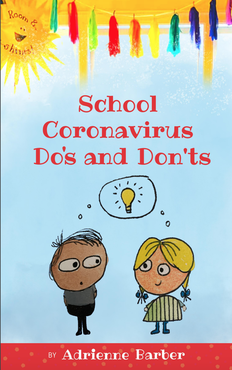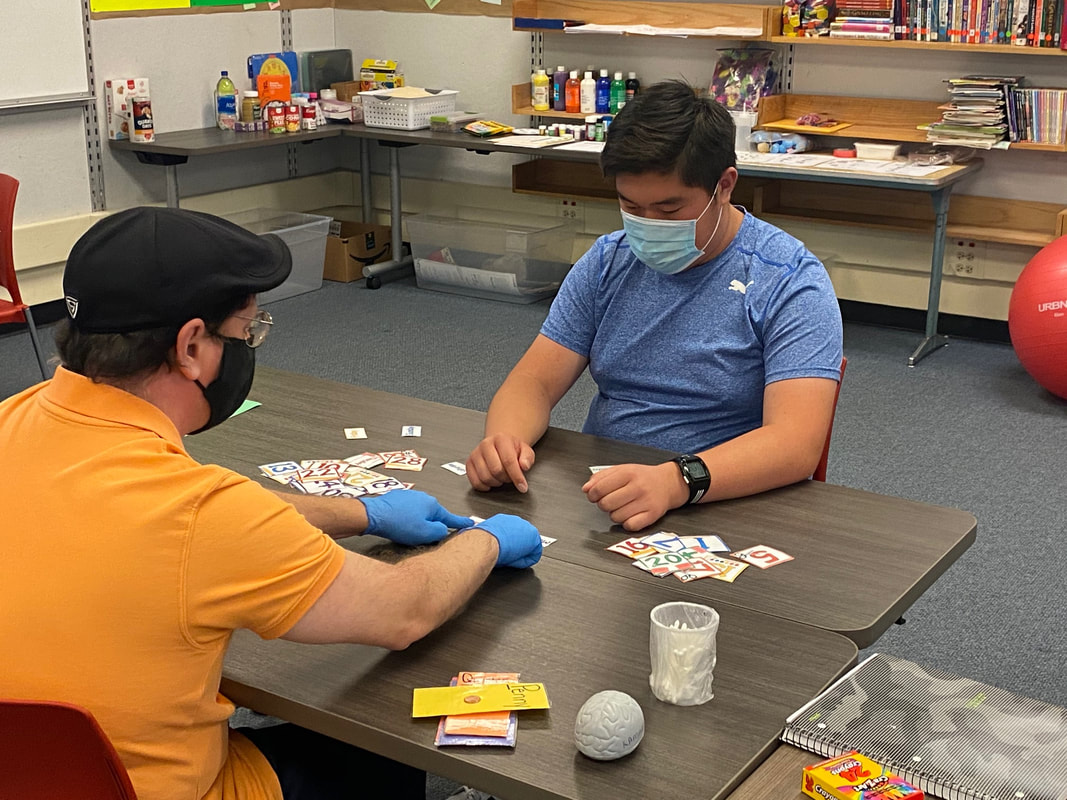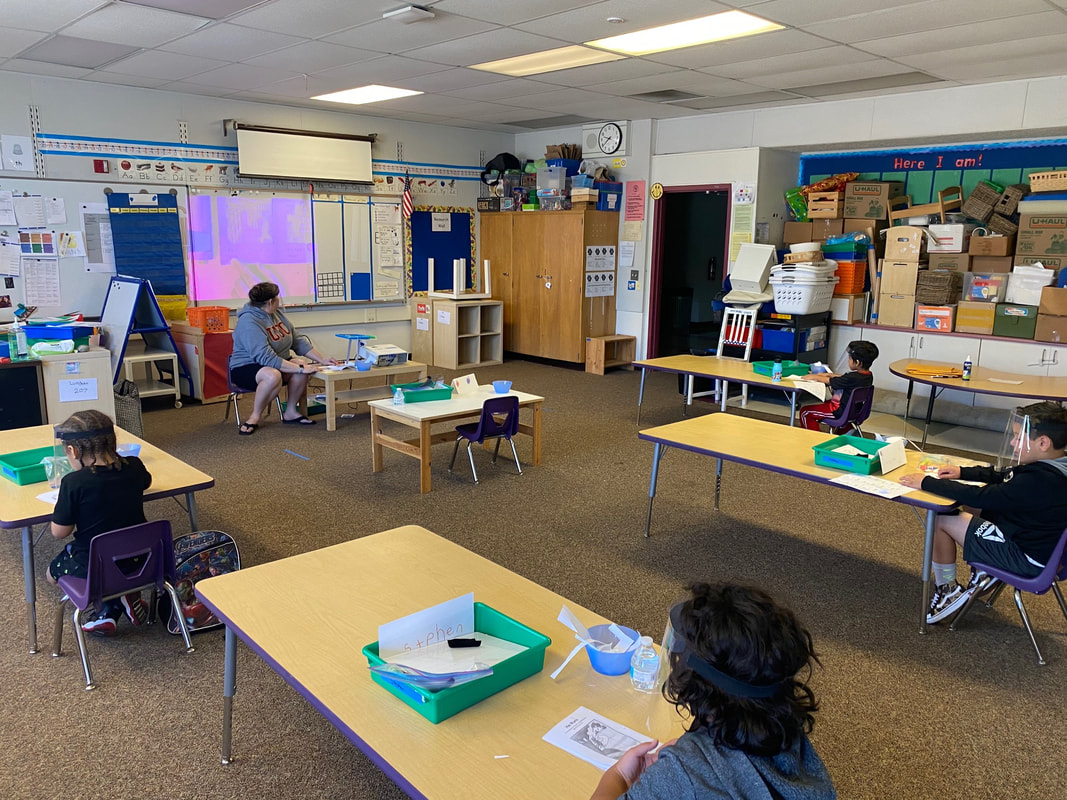 Sinnott Elementary School teacher Adrienne Barber authored her first children’s book, titled “School Coronavirus Do’s & Don’ts,” over the summer. “Inspired by her incredible, funny, and hard-working students,” Barber’s goal was to “write a book that brought some comfort and humor to students everywhere.” Barber, a first and second grade public school teacher for the last 20 years, wrote and illustrated the entire book. “It's an informative and silly guide to help children with the changes in schools, whether they attend online or in person,” Barber explained. “I published this week, and it's already been seen in several countries. The best part is that it's making some kids laugh.” The book, which can be found on Amazon, has already been translated in Mandarin, Spanish, Italian, and Hindi, with Vietnamese and Korean on the way. “I will create a multi-language version as well,” she added. “My friends, as well as some students from the past and their families, have all joined in to help with translations. It's been pretty incredible.” Barber also has her own website with free resources for families. After a quick health check upon arrival at Calaveras Hills High School, an Extended School Year (ESY) student—one of a dozen whose family opted for in-person instruction over the summer—heads to the restroom to wash his hands before walking over to the classroom.
The ESY Hybrid Pilot Program, which enrolled 15 high school students (grades 9-12) this summer, began virtually on June 15, with the in-person component introduced on June 22. Students must have an Individualized Education Plan (IEP) that qualifies for the Extended School Year Program to participate in the extended program. “Especially for these students, the reason that they qualify for ESY in their IEPs is because they would show regression (with a gap in their education), so this is to help them maintain their progress towards their IEP goals,” said second-year ESY Principal Kristina Ravo, who is the first to welcome each student before conducting the health check. During the first week, one student comes in once a week for a 45-minute, in-person instruction session—which is co-taught by a teacher and paraprofessional, with support from a Behavioral Interventionist, present to take data and provide support if necessary. As the pilot program continued with success through July 23, classes expanded to 75 minutes and then further with two students in class per session instead of one. “We expand and roll out the program as we go,” Ravo said. “It’s neat to see it grow and the program definitely would not be as successful without the hard work of our in-person team.” This year, Mr. DeGuzman led the virtual instruction and Mr. Stimson led the in-person 2:1 sessions with students in partnership with Mark Navarro (Paraprofessional) and Wesley Casco (BIT). For in-person instruction, each student has their own materials box that is only used by that student and not shared with others. Activities and lessons that are creatively planned to meet individual student IEP needs are done, such as cooking and various methods of academic practice. The virtual classroom includes contact information, Google Hangout Meet links, daily/weekly lesson plans with links to resources and materials, additional resources for parents to access, and how-to videos. “All of our Special Education staff is amazing. Their dedication and passion for the students is awesome,” said Ravo. “I love working with the team and having a different interaction than I would during the school year.” A group of five Kindergarten students, along with their teacher, have been piloting an in-person summer school program this year at Alexander Rose Elementary School. COVID19 safety protocols, such as social distancing, wearing face coverings, and sanitizing hands, are all part of the daily routine agreed upon by all participating families.
“It’s going really well,” said Summer School Principal Lori Nuno. “A parent this morning said her son is very excited to get to school everyday.” The day begins with staff outside waiting as parents drop off their children in front of the school. Each student has a symptoms check, along with a squeeze of hand sanitizer, before moving to their designated spot. Each student is given six feet of social distance from the next. The students then walk in a single-file line to their classroom, where everything they need for that day is already at their desk. “(Ms. Lundeen) can get way more done with them in-person than online,” said Nuno, an assistant principal at Rancho Milpitas Middle School in 2019-20. “She’s made it so they don’t have to leave their desks, except for using the bathroom. If they do, they must wash their hands in the bathroom and then also use hand sanitizer when they come back into the classroom.” Of 17 summer Kindergarten students, five families opted to have their child come in from 8:45-10am Monday through Thursday for in-person instruction. This quintet is not required to partake in the online instruction that is in place for the more than 200 Kinder through 6th grade Summer School students. At their desks, the teacher and students wear face shields instead of facemasks. They must keep them on for the entire school day. Nuno said the clear face shields allow teachers to see and evaluate their students’ expressions, while also permitting students to see the teacher pronunciate words. Schools are a designated Essential Business, and are permitted to operate in this capacity as long as they conform with guidelines laid out in the Social Distancing Protocol of the County Health Officer Risk Reduction Order. Milpitas Unified School District is phasing in the 2020-21 school year with all students in 100 percent distance learning for at least the first six weeks. Governor Newsom’s new statewide directive for students returning to campuses mandates 14 consecutive days of zero new COVID19 cases in the county.. “This program that we’re piloting is what it will look like solely in the classroom, not school-wide, because we only have one class of five students,” said Nuno, who leads 19 summer teachers in various programs, almost all virtual. “They get a chance to see what fits their style of teaching and they can transfer that into the fall. It’s a great way to experiment to see what strategies work best for them as classroom teachers.” MUSD’s COVID19 Advisory Task Force, along with its 14 subject-concentrated subcommittees, continues to map out all aspects of a 2020-21 Plan, which involves phasing-in of students on campuses in varying intervals at the elementary, middle school, and high school levels. District leaders, who have invited parents to a series of 10 virtual Q&A sessions throughout the month of July to answer questions about 2020-21, are scheduled to reconvene at an August 3 special board meeting and update the community. |
NOTICE OF PUBLIC HEARING:
The governing board of Milpitas Unified School District will hold a Public Hearing on Tuesday, June 28, 2022. Media ResourcesArchives
July 2024
Categories |
Milpitas Unified School District
|
|



 RSS Feed
RSS Feed
